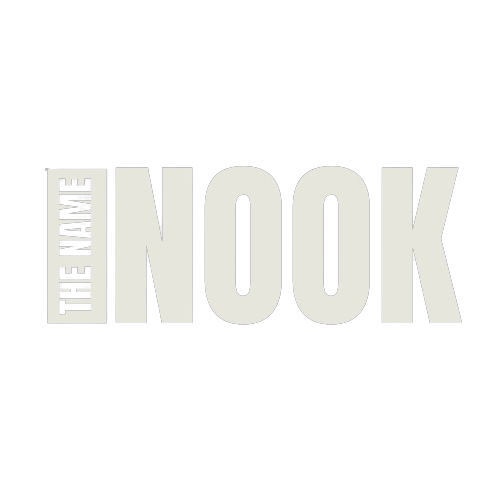Syllabus or Syllabi? Clearing Up the Confusion
If you’ve ever felt puzzled by academic terms, you’re not alone. One word that often trips people up is “syllabus”—especially when it comes to its plural form. Is it syllabuses or syllabi? This isn’t just a matter of grammar; it touches on history, culture, and how the English language has evolved.
Let’s break it all down and make sense of the mystery—while also looking at what a syllabus actually is and why it matters.
📘 What Is a Syllabus?
A syllabus is a vital document in any course. Think of it as a roadmap that outlines everything a student needs to know about the class. It typically includes:
-
Course Description: A summary of what the class covers
-
Learning Objectives: What students are expected to learn
-
Required Materials: Books, articles, and other resources needed
-
Grading Policy & Schedule: How and when assignments will be assessed
In short, the syllabus helps keep both students and instructors aligned from day one. Without it, classes would feel a lot more chaotic.
🔤 Where Does the Word “Syllabus” Come From?
The word has an interesting backstory. It goes all the way back to Latin, where it was used to mean a list or label. Somewhere along the way, during the 15th century, scholars confused it with the Greek word σύλλαβος (sullabos), which means “a taking together.” That little mix-up stuck—and eventually, the word made its way into academic language as we know it today.
By the mid-1600s, “syllabus” was being used to refer to an outline of topics. Over time, as education systems grew more formal, it became the go-to term for course outlines in schools and universities.
🤔 So, What’s the Plural of Syllabus?
Here’s the part that causes the most confusion: What’s the correct plural—syllabuses or syllabi?
✔ Syllabuses
This is the standard English plural. It follows typical pluralization rules by simply adding “-es” to the end. It’s especially common in American English and is perfectly acceptable in any academic or casual context.
Example:
“Students received the syllabuses for each of their classes.”
✔ Syllabi
This form is borrowed from Latin, where some words take an “-i” ending in the plural. It sounds more formal and scholarly, so you’ll often see it used in academic circles.
Example:
“The committee reviewed all the syllabi before approving the curriculum.”
Both are correct—you can use the one that best fits your tone and audience. If you’re writing something formal or academic, syllabi might sound more polished. But if you’re aiming for clarity and accessibility, syllabuses works just fine.
What About “Syllaboi”?
You may have come across the term “syllaboi” being used as the plural of syllabus. While it might sound scholarly, it’s actually incorrect. The proper plural forms are syllabuses or syllabi—both widely accepted and grammatically accurate. Using “syllaboi” could lead to confusion and weaken the credibility of your writing, so it’s best to steer clear of it.
Understanding Plural Forms of Words Ending in “-us”
To better grasp why we say syllabuses or syllabi, it helps to look at other nouns that end in “-us.” Many of these come from Latin and follow unique plural rules:
-
Cactus → Cacti
-
Focus → Foci
-
Alumnus → Alumni
However, not all “-us” words follow this pattern. English also allows standard pluralization for some, which can be a bit tricky.
More Examples:
-
Virus → Viruses (not viri)
-
Octopus → Octopuses or Octopi (both are used)
-
Status → Statuses or Stati (though “statuses” is far more common)
As you can see, plural forms can vary depending on the word’s origin and how it has evolved in usage.
Using “Syllabus,” “Syllabuses,” and “Syllabi” in Context
To make things clearer, let’s look at how these forms are used in real sentences.
Singular: “Syllabus”
-
The syllabus for the literature course was well-organized and detailed.
-
I read the syllabus carefully before choosing the class.
-
The professor updated the syllabus after getting student feedback.
Each example refers to a single course outline.
Plural: “Syllabuses”
-
The administration uploaded the syllabuses for next semester online.
-
Departments are required to submit their syllabuses by Friday.
-
All syllabuses are accessible through the school’s portal.
“Syllabuses” follows standard English grammar and is widely used, especially in casual or American English.
Plural: “Syllabi”
-
The faculty reviewed the syllabi to ensure they met university guidelines.
-
Students compared their syllabi to plan their semester workloads.
-
You can download all course syllabi from the academic dashboard.
“Syllabi” offers a more formal, academic tone and reflects the word’s Latin roots.
How to Use Possessives with “Syllabus” and “Syllabi”
Possessives help show ownership or relationships—something especially useful in academic writing. Here’s how to use them with both the singular and plural forms:
Possessive with “Syllabus”:
-
The professor’s syllabus outlines key course topics.
-
The students’ syllabus includes reading deadlines.
-
The university’s syllabus is posted on the website.
-
The department’s syllabus features specialized content.
Possessive with “Syllabi”:
-
The department’s syllabi represent different course levels.
-
The faculty’s syllabi include both lectures and practicals.
-
The school’s syllabi meet national education standards.
-
The students’ syllabi reflect their chosen areas of study.
Using these forms correctly adds polish and clarity to your writing, especially in formal or academic environments.
Synonyms for the Word “Syllabus”
Expanding your vocabulary can significantly improve the clarity and effectiveness of your communication—especially in academic settings. Here are several synonyms for syllabus, along with examples of how they can be used, particularly when referring to more than one.
Formal Synonyms
These terms are appropriate for academic or professional contexts:
-
Course Outline
A widely recognized term that clearly refers to the structure of a course.
Example: “The course outline was handed out on the first day of class.” -
Curriculum Guide
Usually refers to the broader educational plan across multiple courses or subjects.
Example: “The curriculum guide lists the goals and topics for each subject in the program.” -
Learning Guide
A flexible term that can refer to any instructional material supporting a course.
Example: “The learning guide includes weekly objectives and reading assignments.” -
Course Compendium
Suggests a more detailed and comprehensive collection of course materials.
Example: “The course compendium contains lecture notes, readings, and assessments.”
Informal Synonyms (Use with Caution in Academic Writing)
These are better suited for casual conversation or internal class discussions:
-
Course Handout
Typically refers to a single-page summary or introductory document.
Example: “The course handout gave a brief overview of expectations.” -
Course Packet
A bundled set of materials, often printed or given at the start of a course.
Example: “The course packet included key readings and the grading policy.” -
Course Roadmap
An informal way to describe a semester plan or sequence of topics.
Example: “The course roadmap showed how the subject would progress week by week.” -
Course Cheat Sheet
A very informal summary, often listing key terms or important deadlines.
Example: “The cheat sheet was helpful for reviewing major concepts before exams.”
Tip: When in doubt, stick with more formal terms in professional or academic writing to maintain clarity and credibility.
Why Context and Culture Matter
Your word choice should always consider your audience. In academic or formal writing, terms like course outline or curriculum guide are safer. In contrast, casual conversations with peers may allow for terms like roadmap or cheat sheet.
Cultural Nuances in Using “Syllabuses” vs. “Syllabi”
The choice between syllabuses and syllabi isn’t just about grammar—it can also reflect cultural or regional preferences:
-
In American English, syllabuses is more common and aligns with standard English pluralization.
-
In British English, syllabi is often preferred, reflecting its Latin origin.
Being aware of these differences can help you adjust your language based on your audience, whether you’re writing for an international academic journal or speaking with classmates from different countries.
How Language Evolves
Language constantly changes due to cultural trends, technology, and education. As classrooms become more global and learning environments more digital, understanding how language adapts is key to being an effective communicator.
Regional Differences in Pluralization
-
United States: Syllabuses is widely used, but syllabi is still recognized in formal contexts.
-
United Kingdom: Syllabi is more commonly used, reflecting British preferences for Latin plurals.
Bridging Cultural Gaps
When engaging with people from different backgrounds, choosing the version that’s familiar to your audience can help build better connections and prevent misunderstandings.
Technology’s Role in Modern Education
Online learning has transformed the way syllabuses are shared and used. Today, most schools and universities provide digital syllabuses that are:
-
Accessible: Students can view them anywhere, anytime.
-
Flexible: Professors can update them as needed throughout the course.
-
Interactive: They may include links to videos, forums, and other multimedia content.
-
Collaborative: Students can engage with syllabus-related materials and participate in online discussions.
Benefits of Digital Syllabuses
-
Convenience: No more printing or paper copies.
-
Real-Time Updates: Adjustments can be made to accommodate changes in schedule or assignments.
-
Improved Engagement: Interactive features make it easier for students to stay involved and on track.
Conclusion
So, what’s the plural of syllabus—syllabuses or syllabi? The answer is: both are correct. Your choice should depend on the tone, formality, and cultural context of your writing.
Understanding these differences not only improves your grammar but also helps you communicate more clearly and effectively. Whether you’re a student, educator, or professional, mastering the nuances of academic language—from plural forms to digital tools—will enhance your learning and teaching experience.
Further Reading:
-
Merriam-Webster Dictionary: Entry for “syllabus”
-
Purdue OWL: Tips for academic writing
-
Journal of Language and Linguistics: Articles on the evolution of educational language
Now that you’re equipped with this knowledge, you can confidently navigate the complexities of academic terminology—no matter where your educational journey takes you.

